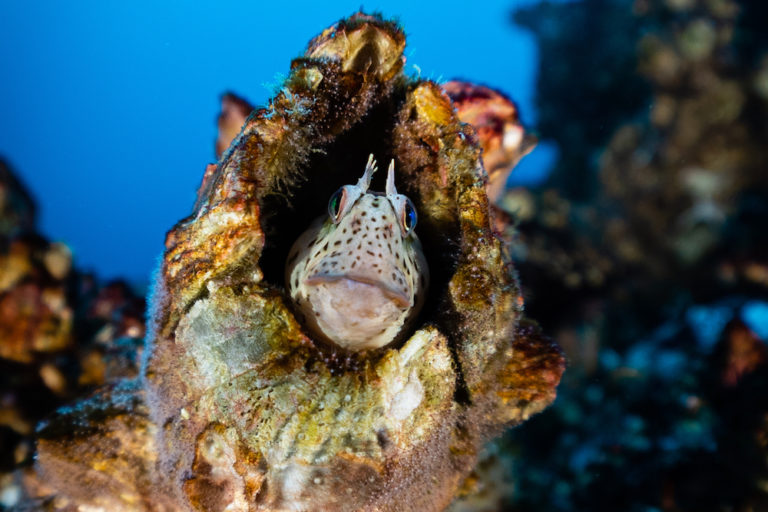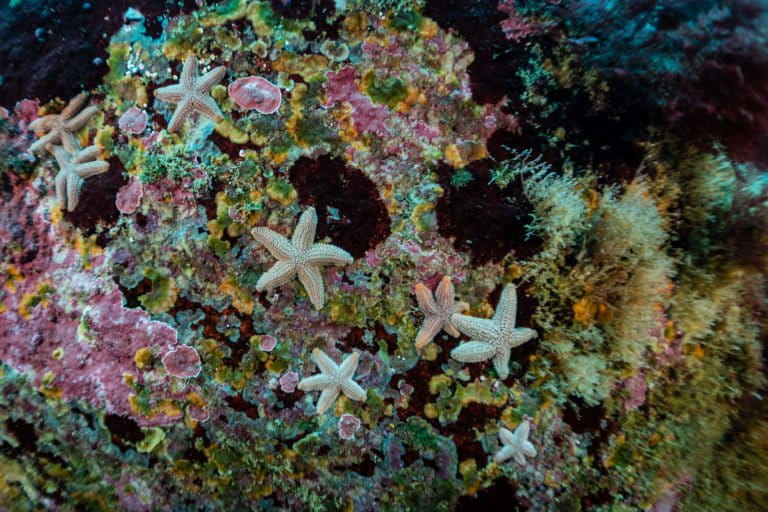- In Chile’s Valparaíso region, artisanal fishers have created grassroots marine reserves to protect marine biodiversity.
- The areas are small, some of them just 15 hectares (37 acres) in size, but they provide a haven for marine creatures to grow and reproduce.
- This growth can contribute to regenerating coastal biodiversity, making the region more resilient to climate change, while the fisherfolk can benefit from a greater availability of resources in the long term.
Protecting the oceans is crucial to societies’ survival because, as the United Nations has recognized, they “drive the global systems that make the Earth a habitable place for humans.” The world’s oceans regulate the climate, provide rainfall, produce oxygen, and are the main source of protein for more than a third of the global population: more than 3 billion people around the globe depend on marine and coastal biodiversity for their livelihoods. Oceans also absorb more than 90% of the excess heat due to climate change, and a quarter of human carbon dioxide emissions, so they are also essential to stabilizing the planet’s climate.
So far, though, humanity’s increasing carbon dioxide emissions have affected the health of the oceans by warming and acidifying seawater. The U.N. says this has not only “led to dire changes for life underwater and on land,” but also “reduced the ocean’s ability to absorb carbon dioxide and protect life on the planet.”
In this scenario, coastal waters are the hardest hit, since nearshore pollution compounds climate change stressors. Small-scale fisheries are located closer to the coast and are therefore the most affected. According to the U.N., “Without concerted efforts, coastal eutrophication” — the increase in inorganic nutrients from human activities, which causes accelerated algal growth, among other things — “is expected to increase in 20 percent of large marine ecosystems by 2050.”
To address the problem, the U.N.’s Sustainable Development Goals include creating effectively managed marine protected areas. In Chile, artisanal fishers from five communities have decided to help this global effort by protecting areas of the sea where they have historically fished and harvested shellfish.
The importance of marine protected areas
Why are marine protected areas crucial for mitigating the effects of climate change? Marine biologist Daniela Díaz recently addressed this question in a seminar titled “Ocean, Climate Change and Marine Protected Areas” that included officials from Chile’s National Fisheries Service (Sernapesca), the Undersecretariat of Fisheries and Aquaculture (Subpesca), and the Ministry of the Environment (MMA).
“Climate change is a stressor that will obviously have worse impacts on those areas that are already affected by other activities,” Díaz said. Marine protected areas (MPAs), being protected from pressures such as fishing, allow the populations of species that inhabit them to be healthy in terms of biomass, diversity and reproductive capacity, and this, in turn, makes them more resistant to adverse effects such as those caused by climate change.

“Populations in marine protected areas are more resilient to abrupt changes like heat waves or physical disturbances, for example, as well as the long-term effects of climate change,” Díaz said.
More than 40% of Chile’s maritime territory is under some category of protection, making it the Latin American country that conserves the largest amount of its waters. However, almost all the protected areas are located far from the coast, around islands like Robinson Crusoe, Desventuradas or Rapa Nui (also known as Easter Island). Meanwhile, along the mainland coast, “between Arica and Puerto Montt, which is where most of Chile’s population lives, the marine protected areas that exist represent less than 1% of the protected seas,” said Rodrigo Sánchez, executive director of marine conservation nonprofit Fundación Capital Azul.
Scientists and conservationists agree on the urgency of protecting the coastal region because it’s where people live and where fishing, aquaculture, tourism, shipping and other activities take place. In other words, “it is key to protect where we’re having the most impact,” said Sánchez, who has also been a diving instructor for 15 years and has witnessed “the deterioration of the coastal area.”

In response to the lack of MPAs along the coast, fishers from five communities in the region of Valparaíso, one of the country’s most populous, have decided to voluntarily establish marine refuges where they agree not to harvest any resources.
Marine refuges
Chile’s Areas for the Management and Exploitation of Benthic Resources (AMERB) are zones of the sea managed under a model that assigns exclusive harvesting rights to artisanal fishers’ organizations. These groups harvest species that live on the seabed (“benthic” species), including lobster, sea urchins and limpets.
Six years ago, the artisanal fishers’ union of Maitencillo decided to protect, as part of its AMERB, 15 hectares (37 acres) of ocean. Now, four more communities along the coast — Ballenas, Zapallar, Cachagua and Ventanas — have joined the initiative, which is led by Fundación Capital Azul.
See related: Chile rejects Dominga port project opposed by fishing communities

These small MPAs cannot be used to harvest any type of resource, Sánchez said, and the objective is to “generate a nucleus of conservation that has a seedbed effect for the rest of the management area and adjacent zones.”
In Zapallar, where the MPA was created just two years ago, “changes have already been noticed,” said Sergio Veas, president of the fishers’ union there. Across the protected 15 hectares, “places where there were no fish before are being populated. Now we see vieja, bilagai, sandperch and comber,” the fisherman said. He added he hopes that, in time, the abundant life generated in the protected area will begin to move beyond the refuge, making more resources available for fishers in areas where they are allowed to fish and harvest seafood.

Sánchez said the work being done by Fundación Capital Azul includes monitoring biodiversity in the marine reserves to measure the density of different species, and counting and measuring specimens. In Maitencillo, where nobody has harvested resources from the MPA for six years, “there is already evidence that there are more resources, and that they are larger. Since no one fishes them anymore, they may be longer-lived and act as reproducers,” he said. “I am a witness to what is in the marine refuges, and it is impressive what is happening down there.”
“It’s very useful for us,” Veas said, “because this marine refuge is right on the border of our management area and so it provides us with young individuals. Any little fish that starts a family there, if the marine refuge becomes too small, they will go out into our area,” he said.
And because the MPAs are relatively close to each other, the effects of the protection are expected to be greater. “The idea is that they be connected, not one right next to the other, but because they are close, they will benefit each other and also the entire contiguous coastal area,” Sánchez said.

Kelp forests are another resource being conserved in the marine refuges. These are home to many species, as well as their eggs. Veas is well aware of this, and he calls these ecosystems “the nurseries of the sea.”
“In these kelp forests live all these little critters, all the shellfish, the mollusks, the fish,” he said.
And that’s not all. “Preserving the kelp forests makes the coastal region more resilient to storm surges, which are more frequent and more violent every year due to climate change,” Sánchez said. Just like coral reefs and mangroves, kelp forests buffer shorelines against the force of waves during storms, whose growing frequency and intensity science has already shown are among the consequences of the climate crisis.
The community’s backyard
For the fishers of Zapallar, the decision to create the marine refuge wasn’t an easy one. Their management area is 80 hectares (198 acres) in size, and so setting aside 15 hectares was a considerable reduction in the amount of sea available to them for harvesting. “It was difficult at first, and we lost money,” Veas said. “But little by little, we realized how important it was for us, who had always been predators, to leave some space for conservation.”
At the local level, Sánchez said, “the community perceives the benefits of the marine refuge. The paradigm that fishermen destroy the ocean has been broken. Now people perceive them as part of the solution and not part of the problem.” Veas agreed, saying “today they look at us in a totally different way.”
The MPA program has evolved as members of Fundación Capital Azul have discovered its unexpected socioecological effects. “When we open the refuge to the community, it becomes like a park. It’s like the community’s backyard and everyone wants to keep the yard clean, everyone wants to collaborate,” Sánchez said. As proof of this, he said, “people approach us for initiatives related to art, educational activities with schoolchildren in the community, and little by little the vocation of the marine refuge emerges — it ceases to be a place that nobody can touch and begins to transform into a hub of activities linked to conservation and the proper use of these spaces.”

Enthusiasm for the MPAs has also allowed the fishers to engage in tourism activities that provide them with a new source of income. “In this way we are recovering [the money] that we stopped earning when we stopped fishing in the refuge area,” Veas said. He adds this is an effort that will continue to bring rewards. “We have to give up something. It’s important that this place be used for conservation,” he said.
Until new marine protected areas can be created along the coast, the marine refuges are proving to be a good solution. Meanwhile, “it’s a solution that comes from the communities, not from a desk in Santiago or an office in Valparaíso. Here, the community made the decision, they said let’s take care of this for ourselves, for our children and our grandchildren,” Sánchez said.
In this way, “it creates a sense of belonging: I love my territory, I take care of my territory.”
Banner image: Members of the artisanal fishers’ union of Maitencillo. Image courtesy of Rodrigo Sánchez Grez/Fundación Capital Azul.
This story was reported by Mongabay’s Latam team and first published here on our Latam site on Oct. 4, 2022.
See related coverage:
